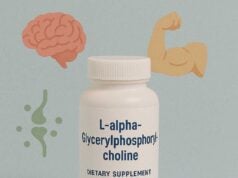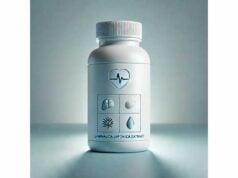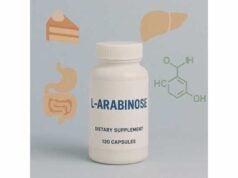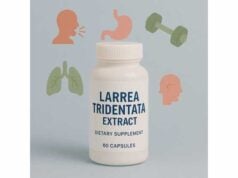
Lapacho—also called pau d’arco, taheebo, or pink trumpet tree bark—is a traditional South American herbal remedy made from the inner bark of Handroanthus/Tabebuia trees. It’s rich in naphthoquinones such as lapachol and beta-lapachone, as well as phenolics and other compounds that give the herb antimicrobial and anti-inflammatory potential in lab settings. People commonly use lapacho as a tea or capsule for immune support, skin and nail concerns, and digestive balance. While its chemistry is intriguing and early findings suggest immunomodulatory activity, robust human studies are limited. Safety matters, too: lapacho may influence blood clotting and can cause gastrointestinal upset in some users. This guide brings the topic down to earth—covering what lapacho is, what benefits are plausible, how to use it thoughtfully, realistic dosage ranges, who should avoid it, and what the research actually says—so you can discuss it with your clinician and make an informed decision.
Key Insights
- Immune and inflammatory support are the most plausible benefits; evidence is preliminary and mostly from lab or small human studies.
- Lapacho can affect blood clotting; combine cautiously with anticoagulants, antiplatelets, or high-dose NSAIDs.
- Typical tea preparations use ~1–2 g bark per 240 mL, up to 1–3 cups/day for short periods; encapsulated bark around 500–1,050 mg/day has been studied.
- Avoid if you are pregnant or trying to conceive, have a bleeding disorder, or are scheduled for surgery within 2 weeks.
Table of Contents
- What is lapacho and does it work?
- What benefits are realistic?
- How to use lapacho daily
- How much lapacho per day?
- Risks, interactions, and who should avoid
- What the research really shows
What is lapacho and does it work?
Lapacho (pau d’arco) is the common name for preparations from the inner bark of pink or purple trumpet trees native to Central and South America. You’ll also see the botanical names Handroanthus impetiginosus and Tabebuia avellanedae (older taxonomy uses Tabebuia impetiginosa). The inner bark is dried and sold loose for decoction (simmered tea) or milled into capsules and tablets. Traditional uses span fever, infections, skin complaints, digestive discomfort, and general vitality.
What makes lapacho interesting is its chemistry. The bark contains naphthoquinones (lapachol and beta-lapachone), phenolic acids, flavonoids, and other small molecules. In cell and ex-vivo studies, these compounds can reduce pro-inflammatory signals, modulate immune cell behavior, and show antimicrobial activity against select bacteria and fungi. Beta-lapachone, for example, interacts with cellular redox pathways, which helps explain some of the observed antioxidant and inflammatory effects in early work. At the whole-herb level, researchers have reported that standardized lapacho extracts can adjust cytokine responses in human immune cells, consistent with the herb’s traditional “balancing” reputation.
Does it work in people? That’s where caution is essential. Most evidence remains preclinical, and clinical data are sparse. A small, single-arm study has explored encapsulated lapacho for menstrual cramps, focusing on safety and tolerability rather than definitive efficacy. Claims of broad anticancer effects are not supported by high-quality human trials of lapacho products, and isolated naphthoquinones at pharmacologic doses raise their own safety issues. Put plainly: lapacho has plausible mechanisms and promising lab data, but human evidence is limited; it’s best approached as a traditional aid with cautious, informed use rather than a cure-all.
If you’re considering lapacho, prioritize product quality (verified species and inner bark), use conservative doses for short periods, and pair it with the basics—adequate sleep, nutrient-dense food, and clinical care tailored to your needs.
What benefits are realistic?
When reading about lapacho, you’ll encounter sweeping claims. It’s helpful to separate what’s biologically plausible from what’s proven.
Most plausible (but still developing)
- Inflammation moderation. In controlled lab settings, lapacho extracts can dial down pro-inflammatory cytokines while shaping immune responses. This aligns with traditional use for aches and inflammatory discomforts, and it’s the most coherent benefit narrative so far. In practice, some users report milder cramping or general soreness relief; whether this exceeds placebo remains uncertain without larger, controlled human trials.
- Antimicrobial support (adjunctive). Extracts show activity against certain microbes in vitro. Real-world benefits likely depend on dose, extraction, and the specific organism. As an adjunct—supporting hygiene, nutrition, and indicated medications—lapacho may contribute, but it should never replace professional care for infections.
- Skin and nail care (topical and oral). Historically, lapacho has been used for nail appearance and minor skin irritations. Any improvement probably stems from both mild antimicrobial effects and reduced local inflammation. Expect gradual changes over weeks, not overnight results.
Possible, but early
- Gastrointestinal comfort. Users sometimes report less bloating or irregularity. Mechanistically, modest antimicrobial and anti-inflammatory actions could explain this, but clinical proof is limited.
- Cycle-related discomfort. A pilot study using encapsulated lapacho reported acceptable safety and exploratory improvements in pain scores. That’s encouraging, but far from definitive practice-changing evidence.
Claims to treat or cure disease
- Cancer and major infections. These are not realistic expectations for store-bought lapacho. While specific constituents have been probed as drug leads, that research involves purified molecules, targeted dosing, and medical supervision—very different from an over-the-counter tea.
What to watch for in products
- Species and plant part. You want verified inner bark from recognized species (often labeled pau d’arco “inner bark”). Outer bark and mixed “wood bark” products are less desirable.
- Extraction method. Water decoction (simmered tea) and alcohol tinctures pull different profiles. Standardized capsules tend to provide more consistency than loose, unlabeled bark.
- Quality seals. Third-party testing (e.g., identity, heavy metals, microbial contaminants) adds confidence.
Bottom line: Realistic expectations are modest: potential help with inflammatory discomforts and adjunctive antimicrobial support, especially as tea or a short-term capsule course. Benefits, if any, are likely to be subtle and cumulative rather than dramatic. If a product promises cures, that’s a red flag.
How to use lapacho daily
If you and your clinician decide to try lapacho, treat it like any other bioactive botanical: define a purpose, choose a form, set a limited trial window, and monitor how you feel.
1) Choose a form
- Tea (decoction). Best for traditional use. Simmering coaxes out water-soluble constituents and is simple to adjust. Taste is earthy and slightly bitter.
- Capsules/tablets. Offer convenience and dose consistency. Look for products specifying species and inner bark, with batch testing data.
- Tinctures. Alcohol-based extracts pull different compounds than water. Useful if you prefer drops, but taste can be strong.
2) Prepare it correctly
- Tea method: Add about 1–2 grams of verified inner bark (roughly 1–2 teaspoons loose cut bark, depending on cut size) to ~240 mL water. Bring to a gentle simmer for 10–15 minutes, cover, then strain. Start with one cup daily and see how you respond.
- Capsules: Begin at the lower end of labeled directions. Many products provide 250–500 mg per capsule of inner bark powder or extract.
3) Time it well
- With meals if you’re sensitive to bitter herbs or prone to nausea.
- Not near surgery or dental procedures. Because lapacho may influence clotting, stop at least 2 weeks beforehand unless your surgical team says otherwise.
- Away from anticoagulant/antiplatelet drugs unless your prescriber explicitly approves use and monitoring.
4) Set a short trial
- For tea or capsules, consider a 2–4 week trial, tracking a specific outcome (e.g., monthly cramps intensity, nail appearance, or a comfort score). If nothing meaningful changes—or if side effects arise—stop. Long, continuous use isn’t advised.
5) Stack the basics
- Combine with sleep hygiene, protein-rich meals, fiber, hydration, and stress management. Botanicals work best on a solid foundation.
6) Keep a log
- Note dose, timing, what you ate, medications, and symptoms (good or bad). This makes decisions with your clinician easier and safer.
7) Know when to stop
- New bruising, prolonged bleeding, dizziness, severe GI upset, or dark tarry stools are stop-signals. Seek medical care for any concerning symptoms.
Pro tip on sourcing: Lapacho has look-alikes and inconsistent labeling. Buy from suppliers that identify species and plant part, and that publish test results for identity and contaminants. Inner bark is the traditional material—avoid vague “bark blend” listings.
How much lapacho per day?
There is no universally accepted clinical dose for lapacho. Human studies are limited, and traditional use varies by region and preparation. With that in mind, the following practical ranges reflect common usage patterns and published exploratory dosing—not prescriptions. Always individualize with your clinician.
Tea (decoction)
- Single serving: ~1–2 g inner bark in ~240 mL water, gently simmered 10–15 minutes, then strained.
- Daily amount: 1–3 cups/day for a short period (for example, up to 2–4 weeks), evaluating tolerance. Some sources suggest higher frequencies, but that increases the risk of GI upset and may not improve outcomes.
- When to reduce: If you notice nausea, loose stools, or cramping, cut the dose in half or switch to every other day. Stop entirely if symptoms persist.
Capsules/tablets
- Common labeled doses: 250–500 mg inner bark per capsule.
- Exploratory clinical use: ~1,050 mg/day of encapsulated bark has been studied over 8 weeks primarily for safety and tolerability in healthy adults with primary dysmenorrhea. That study wasn’t designed to set an “optimal” dose, but it helps anchor a realistic upper bound for short-term trials under supervision.
Tinctures
- Varies by strength. If using a 1:5 tincture (1 g herb per 5 mL), many herbalists start at 1–2 mL once or twice daily and adjust. Because alcohol extracts a different profile than water, start low and monitor for tolerance.
Duration
- Favor time-limited use. For recurring concerns (e.g., monthly cramps), some people use lapacho only during the symptomatic window rather than continuously.
Special circumstances
- Medications that affect clotting: Discuss with your prescriber before starting. If approved, use the lowest reasonable dose for the shortest time, and monitor for bruising or prolonged bleeding.
- Liver disease, pregnancy, or trying to conceive: Avoid lapacho unless your specialist gives explicit guidance.
Quality matters
- A “500 mg” capsule of inner bark is not the same as “500 mg lapachol”—and it shouldn’t be. High, isolated naphthoquinone intake is where toxicity risk rises. Choose whole-bark products from reputable brands rather than chasing high-lapachol numbers.
Bottom line: Start low, use short courses, and let response and tolerability guide you—always with professional input if you take medications or have medical conditions.
Risks, interactions, and who should avoid
Common side effects
- Digestive upset: Nausea, stomach discomfort, or loose stools—more likely at higher doses or on an empty stomach. Taking with food and reducing the dose often helps.
- Urine discoloration: Benign darkening can occur with some preparations.
- Headache or dizziness: Uncommon but reported; discontinue if persistent.
Serious risks (rare but important)
- Bleeding tendency: Certain lapacho constituents can interfere with vitamin K cycling, potentially increasing bleeding risk. This is especially relevant if you use anticoagulants (e.g., warfarin, apixaban), antiplatelets (e.g., aspirin, clopidogrel), or high-dose NSAIDs. New bruising, nosebleeds, or prolonged bleeding are warning signs—stop and seek medical advice.
- Pregnancy risk: High-dose naphthoquinones such as lapachol have shown embryo-fetal toxicity in animal models. Because supplement products vary and human safety is not established, avoid during pregnancy and when trying to conceive.
- Surgery and dental work: Discontinue lapacho at least 2 weeks before procedures unless your surgical team advises otherwise.
Medication and supplement interactions
- Anticoagulants/antiplatelets: Potentially additive effects on bleeding. This includes warfarin, DOACs, heparins, and even frequent high-dose NSAID use.
- Herbs and supplements that may affect clotting: Ginkgo, garlic, high-dose fish oil, dong quai, nattokinase, and others may compound risk.
- Chemotherapy and complex regimens: Always coordinate with your oncology or specialty team; botanical-drug interactions are nuanced.
Who should avoid lapacho
- Pregnant or trying to conceive, and breastfeeding individuals (safety not established).
- People with bleeding disorders or a history of unexplained bruising.
- Those scheduled for surgery within the next 2 weeks.
- Individuals with significant liver disease unless a specialist approves and monitors use.
- Children (insufficient safety data).
Allergy considerations
- Allergic reactions are uncommon but possible. Rash, itching, or swelling warrants discontinuation and medical evaluation.
Sourcing to minimize risk
- Buy from brands that publish identity testing and contaminant screening (heavy metals, microbes). Choose “inner bark” from recognized species with batch numbers and customer support.
When to seek care
- Black, tarry stools; vomiting blood; persistent abdominal pain; unusual fatigue; yellowing of the skin or eyes; or any symptom that worries you. Better safe than sorry.
What the research really shows
The big picture
Lapacho is a classic case of a traditional remedy with compelling lab science and restrained human data. Its bark contains molecules that, in test systems, reduce inflammatory signaling and influence immune cell activity. Exploratory human work suggests acceptable short-term safety at modest encapsulated doses in healthy adults. That’s a decent starting point, but not enough to claim clinical effectiveness for most conditions.
Mechanisms that make sense
- Immunomodulation: Ex-vivo studies using human lymphocytes show reduced pro-inflammatory cytokine responses with certain lapacho extracts. This provides a mechanistic bridge between traditional use and modern biology.
- Redox and enzyme targets: Naphthoquinones such as beta-lapachone engage cellular redox enzymes, influencing inflammatory pathways. This helps explain analgesic or anti-inflammatory signals seen in animal models and contributes to the herb’s antimicrobial profile in vitro.
- Coagulation pathway caution: Separate biochemical work describes how lapachol can inhibit enzymes involved in the vitamin K cycle—the same system targeted by warfarin—offering a plausible basis for bleeding-risk advisories.
What human studies tell us (so far)
- Safety/tolerability: A pilot, single-arm trial of encapsulated inner bark (~1,050 mg/day) over 8 weeks in healthy women reported general safety and moderate tolerability, with mostly mild adverse events. Laboratory markers including prothrombin time were followed. This is reassuring for short-term, supervised use, but it’s too small and uncontrolled to draw efficacy conclusions.
- Efficacy signals: The same study noted improvements in menstrual pain scores. As an uncontrolled design, it cannot establish causality. Placebo-controlled trials are needed.
- Cancer and infections: Despite frequent claims online, high-quality randomized trials showing clinical benefits of lapacho products for cancer or serious infections are lacking. Laboratory and animal results do not automatically translate to safe, effective human treatments.
Quality and variability issues
- Species confusion: Products may list different (or outdated) species names; not all “pau d’arco” is identical.
- Plant part: Inner bark is the traditional source. Products using mixed bark/wood may dilute key constituents.
- Extraction differences: Water decoctions, alcohol tinctures, and encapsulated powders pull different chemical profiles. This variability complicates study comparisons.
Practical takeaway
- If you choose to try lapacho, do so for narrow goals (e.g., inflammatory discomforts), in short courses, at conservative doses, and in conversation with your clinician—especially if you take medications that affect clotting. Expect gentle, adjunctive effects rather than cures, and reassess if benefits aren’t apparent after a few weeks.
References
- The medicinal plant Tabebuia impetiginosa potently reduces pro-inflammatory cytokine responses in primary human lymphocytes 2021 (Laboratory Study)
- Safety and tolerability of Pau d′ Arco (Tabebuia avellanedae) for primary dysmenorrhea: A single-arm, open-label trial on adults ages 18–45 2022 (Pilot Human Study)
- Pau D’arco | Memorial Sloan Kettering Cancer Center 2023 (Clinical Monograph)
- Lapachol Inhibition of Vitamin K Epoxide Reductase and Vitamin K Quinone Reductase 1984 (Mechanistic Study)
Disclaimer
This article is for educational purposes only and does not substitute for personalized medical advice, diagnosis, or treatment. Herbal products can interact with medications and may not be appropriate for everyone. Always consult a qualified healthcare professional before starting, stopping, or changing any supplement, especially if you are pregnant, planning surgery, have a bleeding disorder, or take anticoagulant or antiplatelet medicines.
If you found this guide useful, consider sharing it with a friend or on Facebook, X, or your favorite platform, and follow us for more evidence-guided wellness articles. Your support helps us continue creating high-quality resources.










